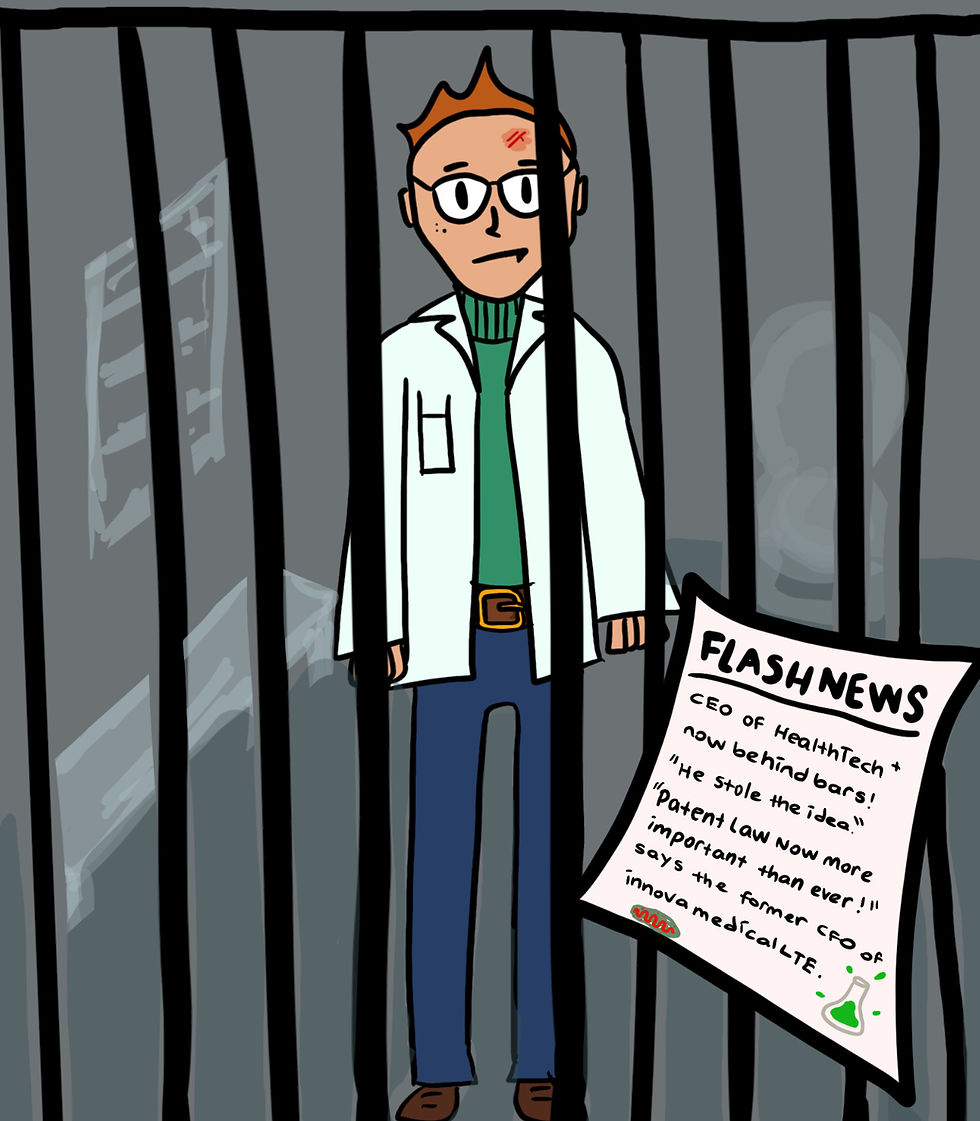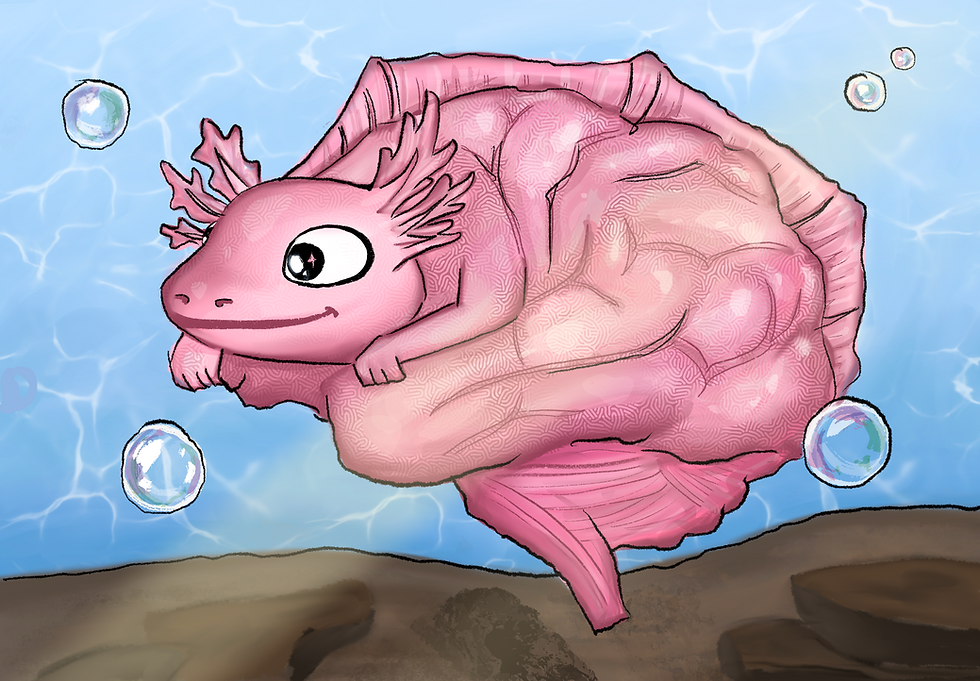RAAS
- Omar ElDimassi
- Jan 14
- 6 min read
Written by: Omar ElDimassi
Edited by: Enoc Padilla, Emili Elkins, and Jesslyn Chen
Illustrated by: Jessica Fu

Abstract
Heart attacks can result from various environmental and genetic factors that raise the risk of heart failure. The renin-angiotensin system (RAS) is critical in regulating blood pressure. When blood pressure falls, RAS releases a hormone called angiotensin II (ANG II), which is the molecule responsible for elevating blood pressure. However, sometimes RAS overworks and releases too much ANG II, leading to high blood pressure. This change can signal potential heart problems. It is important to understand that all processes in RAS, in general, are first regulated by gene expression.
Today, several medications help manage blood pressure by targeting RAS, such as angiotensin-converting enzyme (ACE) inhibitors that prevent the body from making ANG II and blood thinners like aspirin to reduce clotting. Looking ahead, emerging methods like nanomedicine offer the potential to regulate blood pressure with even greater precision by working directly with the molecules and cells involved.
Introduction
Heart disease is the leading cause of death worldwide, especially as people age [1]. Over time, the heart's structure changes, with walls thickening and valves stiffening, making it harder to respond to stress [2]. These changes raise the risks of conditions like atrial fibrillation, characterized by irregular heartbeat, and increase the likelihood of fluid buildup, strokes, and other complications [3].
Blood pressure control is central to heart health, and the renin-angiotensin-aldosterone system (RAAS) is crucial for keeping it within a healthy range [4]. RAAS includes a subsystem called the renin-angiotensin-system (RAS), which regulates blood pressure either by narrowing blood vessels or increasing blood volume. RAS depends on the hormones aldosterone and angiotensin II (ANG II) to regulate blood pressure [4].
How does RAS work in the body?
RAS helps control blood pressure in two main ways. First, it can tighten blood vessels, which makes blood flow more effectively and helps the heart pump better, increasing blood pressure. The second way is by raising blood volume. It does this by telling the body to hold onto more water and salt, which adds more fluid to the bloodstream and increases blood pressure. This process uses a few hormones: antidiuretic hormone (ADH) helps the kidneys keep water in the blood, while aldosterone and ANG II help the kidneys keep more salt, both aiding in the increase of blood pressure [4].
How does RAS (especially ANGII) affect the heart?
ANG II production plays a vital role in blood pressure control, but when overproduced, can contribute to heart disease. ANG II causes the release of another hormone, aldosterone, which causes salts to be absorbed by the body and increases blood pressure, both of which can stress the heart [5]. High levels of aldosterone are associated with high levels of cholesterol which can also contribute to plaque buildup in coronary arteries, potentially leading to artery blockages and heart attacks [5]. It is crucial to understand that RAAS isn't active in the body all the time but only turns on when the body's blood pressure drops, for example, suddenly standing up after resting or for a long time for individuals with heart diseases [4].
Current Treatments and Their Effects
Treatments for heart disease can differ from one person to another and are very dependent on the reason and the cause of their heart disease and whether they have high blood pressure (hypertension) or low blood pressure (hypotension). For hypertensive patients, a mix of dietary and medical interventions may be required. Reducing sodium intake is critical, as it directly lowers blood pressure by decreasing the amount of salt retained by the body that is promoted by the hormones ANG II and aldosterone [6]. Managing cholesterol intake is also important, as high cholesterol further elevates blood pressure. Medically, treatments often disrupt the RAAS system: the medication Lisinopril prevents ANG II from being produced, halting blood pressure-raising pathways [7]. Similarly, Aliskiren completely blocks the RAAS pathway, and Losartan prevents ANG II from impacting its targets, thus preventing systems that raise blood pressure [7].
Conversely, patients with hypotension can be managed by increasing sodium and calcium intake, which helps maintain blood pressure by supporting blood vessel size and blood volume [8]. Moving slowly from a resting position and staying hydrated can also help prevent sudden drops in blood pressure [8]. Medications like Midodrine raise blood pressure by causing blood vessel constriction, or narrowing, while Fludrocortisone increases blood volume to raise blood pressure [8]. Typically, RAAS naturally restores blood pressure, but in those with chronic hypotension, genetic factors may interfere with RAAS function, making additional support necessary [4].
Nanotechnology in medicine - the power of nanomedicine
What is Nanotechnology?
Nanotechnology is the science and engineering of manipulating matter at a small scale of 1 to 100 nanometers [9]. A nanometer is one-billionth of a meter, human hair is about 80,000 nanometers wide, and the width of paper is 100,000 nm. At the nanoscale, matter can have different physical, chemical, and biological properties. For example, some nanomaterials are more robust, thermally or electrically conductive, or chemically reactive than other forms of the same material [9].
What is Nanomedicine?
Nanomedicine is a branch of medicine that uses nanotechnology to treat and prevent disease. It involves using nanoscale materials, such as nanorobots and nanoparticles, to diagnose, deliver, sense, or actuate in a living organism. In other words, it uses engineered particles on a nanoscale to either provoke genetic changes or act as a delivery agent where molecules and specific medicine can attach to and be delivered to specific cells in the body. An article published in 2017 showed that nanomedicine can help accelerate wound healing by promoting cell migration, proliferation, differentiation, and modulating inflammation, all while encouraging the growth of new blood vessels [10]. As scientist Joy Wolfram explained in her TED Talk, nanoparticles are like fire trucks; they guide the firefighters (the medicine) to reach the fire (the target cell) and stop it from growing (administering drugs).
Consequences and Potential Issues of Nanotechnology in the Body
Medical nanotechnology uses nanoparticles that interact with the body at the cellular level for medical purposes [10]. These nanoparticles are engineered to be small enough to enter the body through the skin, lungs, or digestive system. Nanoparticles are created to be able to bind to specific cells. They can deliver drugs directly to diseased tissues, enhancing the precision and effectiveness of treatments.
However, nanoparticles also present risks. Because of their small size, they can cross critical barriers, like the blood-brain barrier, and move into organs such as the brain. The body has no natural immunity to nanoparticles, which can lead to unintended health consequences.
Research is ongoing to balance the benefits of nanotechnology with the potential risks, aiming to enhance treatment options while minimizing harmful consequences [10].
Conclusion
Looking forward, nanomedicine holds exciting potential for cardiovascular health. Imagine nanoparticles equipped with specific molecules that can “switch on” a receptor or activate certain pathways, offering a more direct treatment for heart disease. Dendrimers, a type of nanoparticle, can carry drugs to precise targets in the body. They could potentially stimulate inactive receptors in the renin-angiotensin system, addressing RAS-related diseases directly at the molecular level. Many questions remain, such as how long these nanoparticles would remain active in the body and how to regulate their effects safely. Yet, integrating nanomedicine with RAS treatments could open new frontiers in heart disease management.
References
[1] Di Cesare, M., Perel, P., Taylor, S., Kabudula, C., Bixby, H., Gaziano, T. A., McGhie, D. V., Mwangi, J., Pervan, B., Narula, J., Pineiro, D., & Pinto, F. J. (2024). The Heart of the World. Global heart, 19(1), 11. https://doi.org/10.5334/gh.1288
[2] U.S. National Library of Medicine. (2021, July 21). Aging changes in the heart and blood vessels: Medlineplus Medical Encyclopedia. MedlinePlus. https://medlineplus.gov/ency/article/004006.htm
[3] “Causes of High Blood Pressure - Risk Factors: Weight, Diet, Age, Lifestyle.” WebMD, WebMD, www.webmd.com/hypertension-high-blood-pressure/blood-pressure-causes. Accessed 17 Oct. 2024.
[4] Mehta, J. K., Kaur, G., Buttar, H. S., Bagabir, H. A., Bagabir, R. A., Bagabir, S. A., Haque, S., Tuli, H. S., & Telessy, I. G. (2023). Role of the renin-angiotensin system in the pathophysiology of coronary heart disease and heart failure: Diagnostic biomarkers and therapy with drugs and natural products. Frontiers in physiology, 14, 1034170. https://doi.org/10.3389/fphys.2023.1034170
[5] Fukuzawa, J., Booz, G. W., Hunt, R. A., Shimizu, N., Karoor, V., Baker, K. M., & Dostal, D. E. (2000). Cardiotrophin-1 increases angiotensinogen mRNA in rat cardiac myocytes through STAT3 : an autocrine loop for hypertrophy. Hypertension (Dallas, Tex. : 1979), 35(6), 1191–1196. https://doi.org/10.1161/01.hyp.35.6.1191
[6] McGrane, M. M., Essery, E., Obbagy, J., Lyon, J., Macneil, P., Spahn, J., & Van Horn, L. (2011). Dairy Consumption, Blood Pressure, and Risk of Hypertension: An Evidence-Based Review of Recent Literature. Current cardiovascular risk reports, 5(4), 287–298. https://doi.org/10.1007/s12170-011-0181-5
[7] Dalla Vestra, M., Simioni, N., & Masiero, A. (2009). Aliskiren: a new inhibitor of renin-angiotensin aldosterone system activity. Minerva endocrinologica, 34(4), 333–338.
[8] Skylynn, T., Abel, T., Christopher, L., Suliman, G., Dominic, R., Joel, V., Yu, Z., & Pemminati, S. (2024). Benefits and Risks of Medications Used in the Management of Hypotension: A Review. Cureus, 16(1), e51608. https://doi.org/10.7759/cureus.51608
[9] Malik, S., Muhammad, K., & Waheed, Y. (2023). Emerging Applications of Nanotechnology in Healthcare and Medicine. Molecules (Basel, Switzerland), 28(18), 6624. https://doi.org/10.3390/molecules28186624
[10] J. Nandhini a, et al. “Nanomaterials for Wound Healing: Current Status and Futuristic Frontier.” Biomedical Technology, Elsevier, 8 Nov. 2023, www.sciencedirect.com/science/article/pii/S2949723X23000569.




Comments